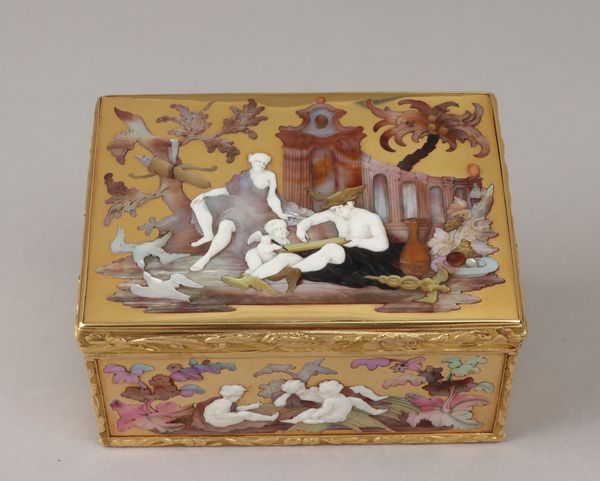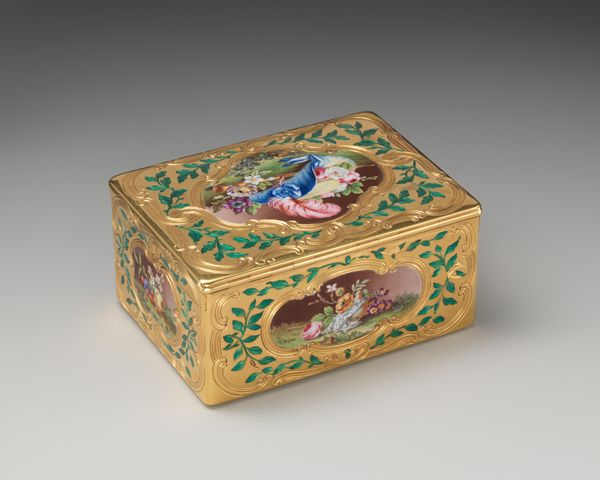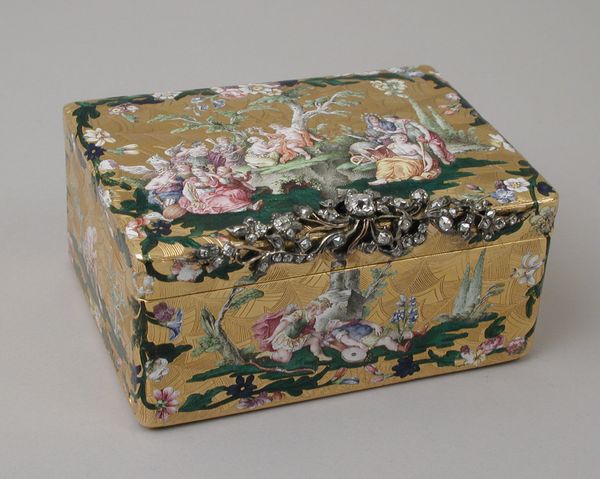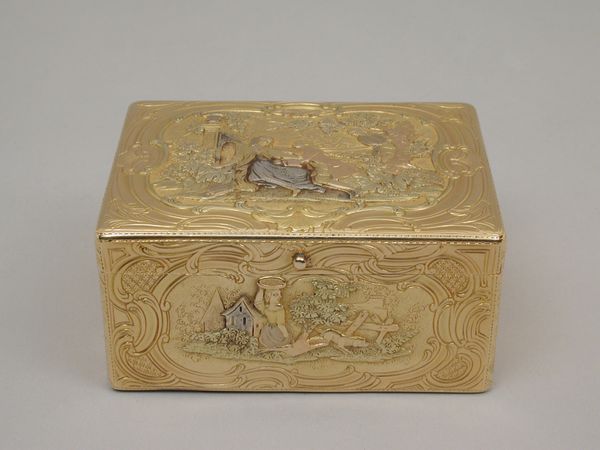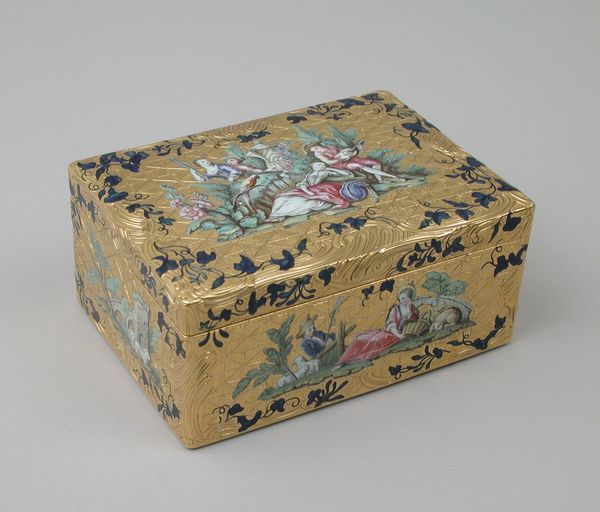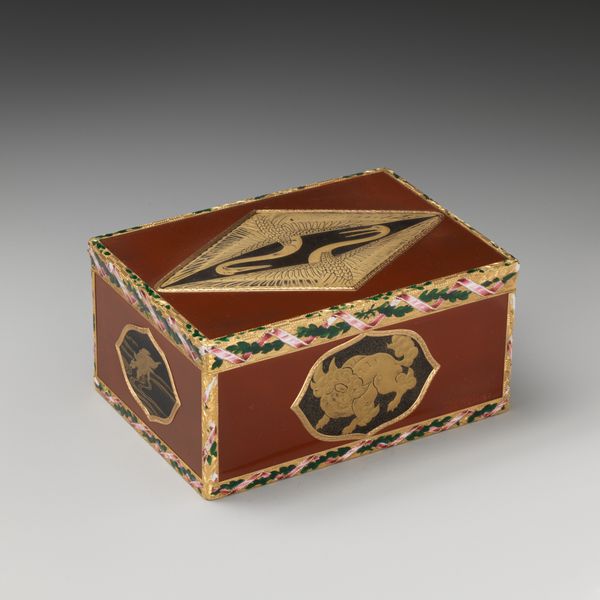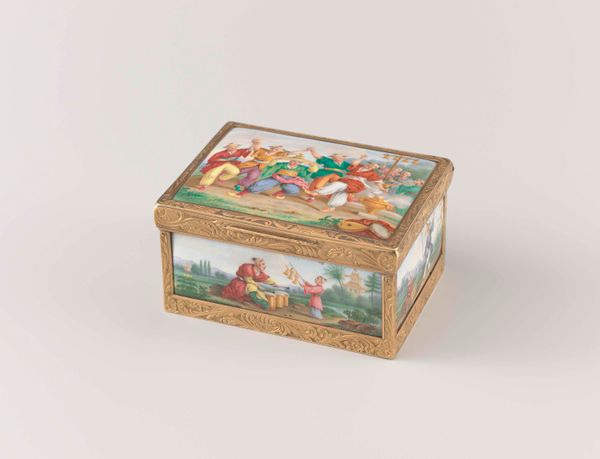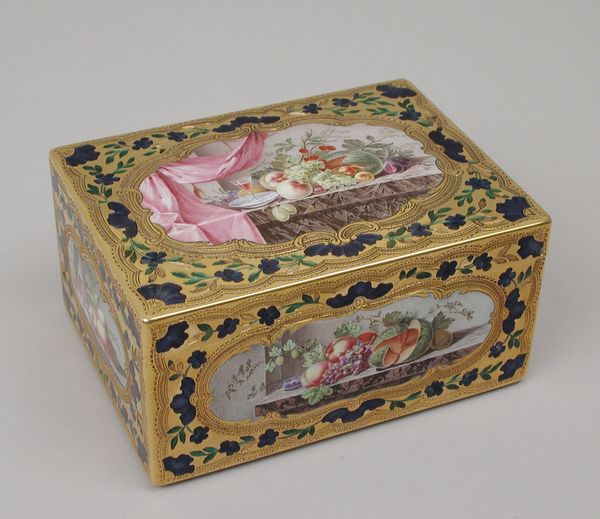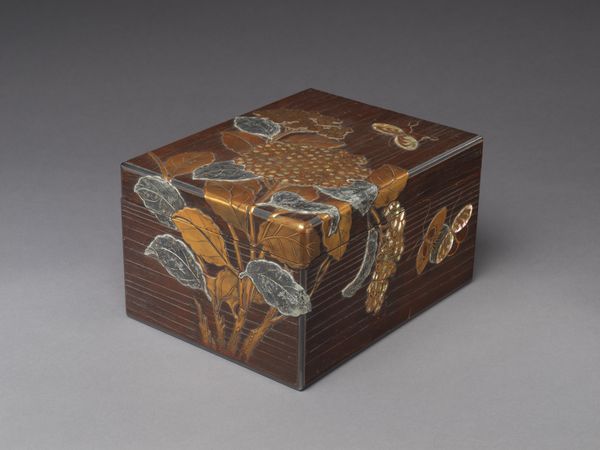
relief, sculpture
#
gouache
#
water colours
#
relief
#
female-nude
#
cupid
#
coloured pencil
#
sculpture
#
decorative-art
#
nude
#
male-nude
#
miniature
#
watercolor
#
erotic-art
#
rococo
Dimensions: 3 1/8 x 2 3/8 in. (7.9 x 6cm)
Copyright: Public Domain
Curator: This intricate "Snuffbox" dates back to around 1750 and is attributed to Claude de Villers. You can currently find it at the Metropolitan Museum of Art. The box features delicate watercolor and gouache relief work, quite a feast for the eyes, wouldn't you agree? Editor: Indeed. My initial impression is one of luxurious decadence. The ivory figures against that soft, warm ground really make it pop. What's the box made of, precisely? Curator: That’s a crucial question! It appears to be crafted from gold, likely of a high karat given the richness of its color. The sculptural elements though are where the magic happens; the layers of pigment build up the erotic miniature scenes, that were certainly all the rage. We can safely call them decorative art. The artist plays with material depth to achieve something really outstanding, which for sure would increase value, or appeal at that time. Editor: Absolutely. The Rococo aesthetic is so clearly present in its delicate portrayal of mythological erotic themes. I see cupids, perhaps hinting at a scene involving Venus herself, given the languid nudes on the top panel, but more deeply what strikes me is that scene evokes a cultural memory of the hedonistic indulgences of the French court, or a nod towards ancient Greek myths on idealization and beauty. The chosen imageries are like frozen cultural symbols that evoke this timeless association to sensuality, perhaps as a discreet display of the owner's status, given the art being miniaturized, in such object. Curator: The production context also matters. Consider the skill and labor that goes into shaping such a small, but exquisite item. Every single figure is molded or cast and is painted by hand! The precious metals used as base material speaks about the global trade networks existing at the time. Was the patron part of this network? These decorative pieces reflect the opulent consumer habits of the elite and the specialized artisanal production, that, by the way, were often a symbol of status back in the days. Editor: And to that point, the symbolism transcends mere material value. The visual language—the reclining nude, the attending cupid—tells a story of pleasure, desire, power. It reminds me a little of how symbols repeat through eras in painting, as such of a silent agreement. Curator: Well, yes and that makes me wonder the social implications, given how portable the item is; how widely it traveled, and what circles were using such intimate and erotic iconographies for entertainment or private admiration. The use value of art being material turns our heads into class division or societal tensions. Editor: It truly offers an interesting meeting point of technique, symbol and historical understanding of the European erotic imaginary back then. Curator: Absolutely! Each tiny scene becomes a portal, a small, beautiful thing, which hides big complex contexts and stories that invites deep reflections.
Comments
No comments
Be the first to comment and join the conversation on the ultimate creative platform.
